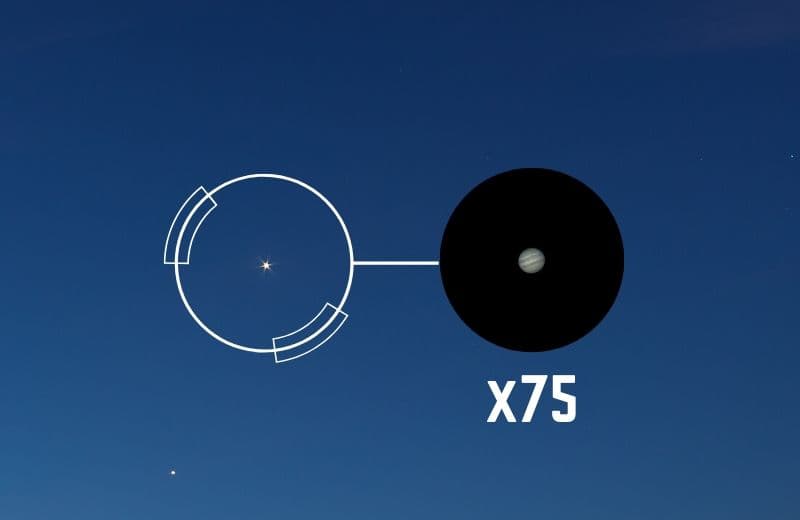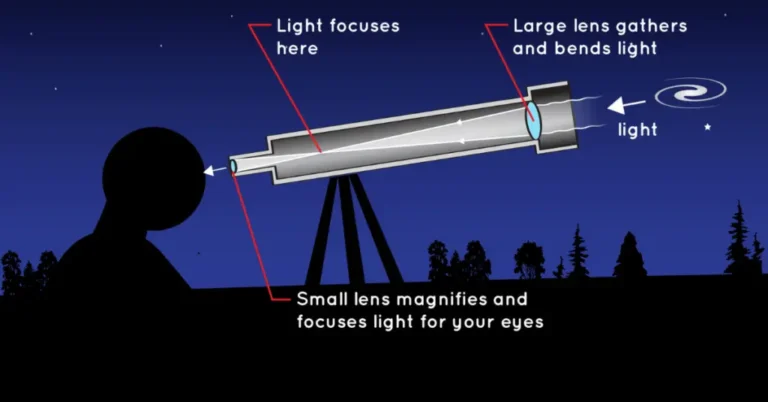How Telescope Magnification Works – A Closer Look
The night sky, an infinite canvas, has been a subject of perennial human fascination. From the ancients navigating by the stars to the modern astronaut’s first steps on the Moon, the cosmos offers a never-ending, awe-inspiring array of sights. The stalwart instrument known as the telescope is central to our ability to reach and touch those celestial marvels. Among its many complex mechanisms, the force multiplier that brings those distant specks into vivid clarity is magnification. But how does it work, and how can we wield it effectively? In this post, we’ll turn our cosmic gaze toward this optical wonder and see its capability.
Understanding Telescope Basics
Before we get into the nitty-gritty of magnification, we must understand the foundational aspects of telescopes. A telescope, by definition, is an optical instrument that aids in observing distant objects. It generally comprises two key components: an objective lens (in refracting telescopes) or a primary mirror (in reflecting telescopes), which gathers light, and an eyepiece that magnifies the image made by the object lens.
Regarding the telescope’s design, the combination of aperture — the diameter of the primary lens (eyepiece) or mirror — and the focal length determines its light-gathering power and the field of view available. These aspects blend to create an optical system that can amplify faint starlight into a discernible image.
The Science Behind Magnification: How Telescope Magnification Works
Magnification is a fundamental concept in optics, making distant objects appear more prominent and closer by bending light through convex lenses or reflecting it off concave mirrors. With telescopes, the prime focus is to bring celestial bodies many light-years away, within viewing distance. This is achieved by increasing the object’s apparent size, creating a larger image that our eyes can perceive.
Through a converging effect with the telescope’s lens or mirror, the eyepiece or ocular lens augments the object’s rendered size. However, it is not merely an additive factor; the intricacies of the eyepiece’s design and the telescope’s focal length come into play, each with its part to play in the final magnification recipe.
Factors Affecting Magnification

While a telescope’s eyepiece is the primary tool for adjusting magnification, it’s not the sole determinant. The ratio of the telescope’s focal length to the eyepiece’s focal length is crucial, as it gives you the telescope’s native magnification. Essentially, the longer the focal length, the higher the magnification power. However, increasing magnification doesn’t always lead to more transparent or detailed views.
There’s a practical trade-off to consider. Higher magnification can stretch the capabilities of the telescope’s optics, especially if the atmospheric conditions aren’t ideal. This can result in an image that is larger and more distorted. There’s a notion in the telescope world that the ‘maximum useful magnification’ should not exceed twice the aperture size in millimeters.
Choosing the Right Telescope Magnification
If you’re a novice peering through a telescope for the first time, it’s crucial to understand that more magnification isn’t always better. The highest magnification possible is rarely the right choice. The optimal magnification depends on various factors, including the observed object and atmospheric stability. For instance, the Moon’s brightness allows for higher magnification without significantly losing image quality. At the same time, the dimmer light of distant nebulae might call for a wider field of view to see the entirety of their ghostly shapes.
Adjusting magnification is also about finding the balance between detail and stability. If the air is turbulent, that detail might not be perceivable, no matter the power of your eyepiece. Therefore, it’s always advisable to start with lower magnification, observe the conditions, and slowly work your way up to the right level for the best viewing experience.
Conclusion
Understanding telescope magnification is not just about making things bigger; it’s about bringing the cosmos to life in your vision with clarity and awe. By respecting the balance between magnification, optical quality, and viewing conditions, you can turn your telescope into a phenomenal window to the universe.
But our exploration doesn’t end here — with new telescopic technology and our continuing adventures into space, the tools and vistas at our disposal continue to evolve. What will you discover next with the correct magnification? Please do your part to look up, and remember, the stars are always gazing back, waiting for us to take a closer look.
FAQs
Do I need to consider the aperture size when selecting magnification?
Absolutely. Aperture and focal length together determine the telescope’s potential for magnification. In general, an aperture that’s larger will allow for higher magnification before the image starts to degrade.
What is the relationship between focal length and magnification?
The telescope’s focal length and the eyepiece’s focal length essentially set the telescope’s inherent power of magnification. The telescope’s focal length divided by the eyepiece’s focal length gives you the magnification factor.
Can I use one eyepiece for all magnification needs?
While you can use one eyepiece, it’s generally more practical to have a set of eyepieces for varying magnification needs. Different objects and viewing conditions will call for different levels of magnification, and having a range of eyepieces gives you the flexibility to adjust your telescope’s performance accordingly.
What is the ‘maximum useful magnification’ I keep hearing about?
This is a concept that takes into account the limitations of Earth’s atmosphere and the optical quality of the telescope. Generally, magnification above 50 times the aperture in inches, or 2 times the aperture in millimeters, approaches the limit of what’s realistically useful in viewing conditions.







